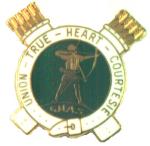One reason that some people get drawn to administration -- the dark side, as many faculty call it -- is the chance to actually get some stuff done. You can get stuff done in your classroom, but the reach is limited. People who see a chance to make larger, more systemic impacts move up to the levels where those decisions are made.
It's the role of faculty to be skeptical about change, because those larger initiatives threaten the freedom of the sphere where they get their stuff done: the classroom. The administrative team to which I belong has spent a lot of time and effort thinking about what changes need to be made to solve some persistent, nagging problems in our curriculum and to enact fully for the first time some of the longstanding promises and rhetoric of our program. The changes are big and complicated, with lots of simultaneously moving parts, and the time they need to get started is yesterday, unless we want to give up on them for yet another year and keep doing the same stuff. The rationales and proposals are as daunting as they are sweeping. The challenge is how to meet faculty somewhere in the middle between "here's everything we need to do!" and "why do we need to do anything at all?"
As I move toward more rarefied positions, I'm watching carefully to see how change gets done. It's a little like sausage-making, I must confess. Do you work out a detailed proposal, and risk having your personnel feel like they didn't have enough input? Do you leave much unresolved, and try to corral a larger group of people into the process of invention -- which is often like wordsmithing a document with a dozen people around the conference table, if you've ever experienced that? Present the proposal close to the time it needs to be implemented, and you have a sense of urgency and a deadline that can help you get stuff done, but you also may convey the sense that it's all already decided. Give people lots of lead time and request their involvement, and they wonder why you're pushing them to do extra work on top of what they've already got on their plate.
I'm not sure there's a Solomonic way of doing administrative leadership that cuts these babies in half. I see lots of ways to go wrong, and sometimes the only way that seems to go right is just steeling yourself and bulling through. But that just confirms the divide. Is there any way to get these factions pulling together? And what's the role of meetings, memos, agendas, emails, minutes, reports, and other kinds of communication tools in pulling people together?
Tuesday, January 10, 2012
Subscribe to:
Post Comments (Atom)





No comments:
Post a Comment